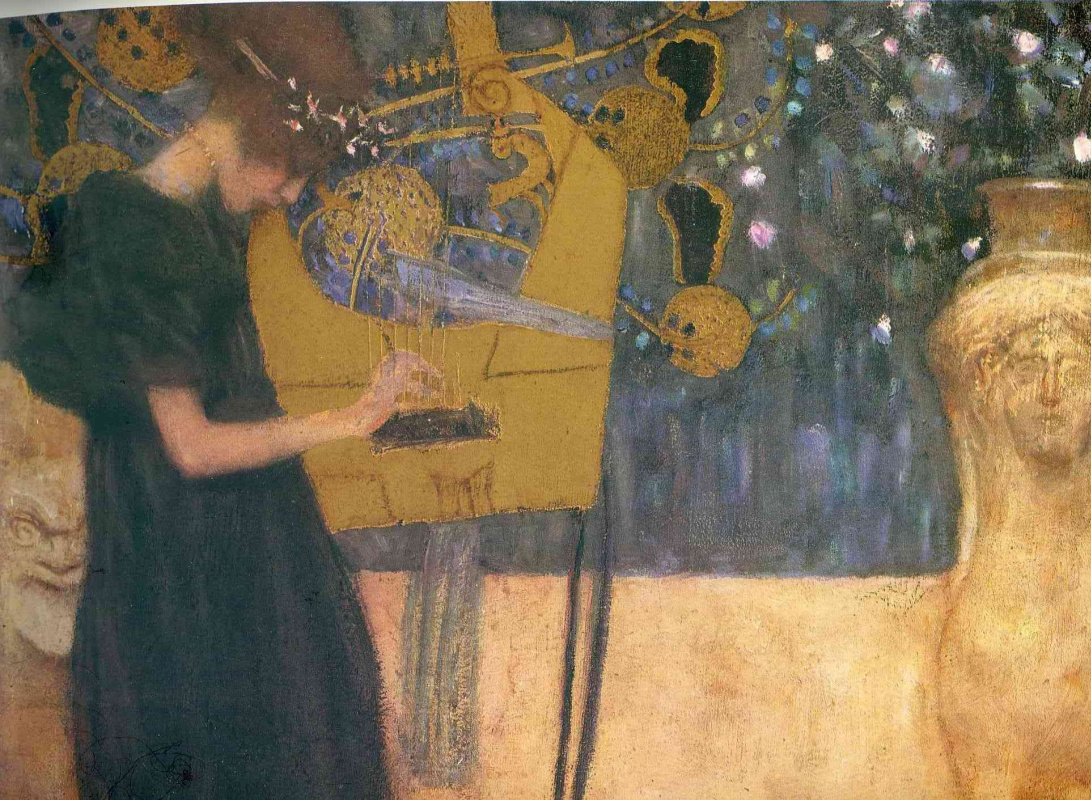log in
Enter site
Login to use Arthive functionality to the maximum
Music
Gustav Klimt • Painting, 1895, 37×44.5 cm
Description of the artwork «Music»
In 1892 Klimt's life happened two consecutive tragic events, which influence on his work and life in General. First died his father, and soon after that he died a brother of the painter Ernst. After his father's death on the shoulders of Klimt went completely to the welfare of the family, and brother's death inflicted a crushing blow to the artist. Ernst Gustav was not only a relative but also a colleague, and one of her closest friends. They are together since childhood, studied art, worked together and achieved great popularity in Vienna.
After the death of his father and brother Klimt permanently depressed. During these years the chief support was Emilia Flege. And at the same time gradually begins to transform and change his work. The starting point can be considered a canvas "Music" written in 1895, and became to some extent a forerunner of the most famous works of the artist, which he will create during the "Golden period". The idea to portray in the painting the Music itself was pretty ambitious, but Klimt was already quite famous in Vienna by the artist to afford it. Besides, in the future, he will prove the critics it absolutely does not care.
Klimt was passionate about antiquities and ancient art. This hobby has allowed him to create an especially bright, imaginative and executed with almost photographic precision the work adorning the walls of the Kunsthistorisches Museum in Vienna. But if the design Museum the focus was on Ancient Egypt, in the painting "Music" reigns Supreme Ellada. The main character of the fabric, very young girl, almost a child, holding a lyre – instrument, sung in ancient Greek art. In the right part the artist depicts the Sphinx, which, among other things, is a symbol of freedom of creativity and personality in General. This picture from the early works of Klimt is distinguished by the rejection of traditional perspective and classical subjects in favor of symbolism, pronounced and decorative characteristic of art Nouveau "flatness, two-dimensionality of the image. But the artist is in no hurry to abandon the usual image of people, which gives the painting the similarity with a slightly blurry old picture.
Author: Eugene Sidelnikov
After the death of his father and brother Klimt permanently depressed. During these years the chief support was Emilia Flege. And at the same time gradually begins to transform and change his work. The starting point can be considered a canvas "Music" written in 1895, and became to some extent a forerunner of the most famous works of the artist, which he will create during the "Golden period". The idea to portray in the painting the Music itself was pretty ambitious, but Klimt was already quite famous in Vienna by the artist to afford it. Besides, in the future, he will prove the critics it absolutely does not care.
Klimt was passionate about antiquities and ancient art. This hobby has allowed him to create an especially bright, imaginative and executed with almost photographic precision the work adorning the walls of the Kunsthistorisches Museum in Vienna. But if the design Museum the focus was on Ancient Egypt, in the painting "Music" reigns Supreme Ellada. The main character of the fabric, very young girl, almost a child, holding a lyre – instrument, sung in ancient Greek art. In the right part the artist depicts the Sphinx, which, among other things, is a symbol of freedom of creativity and personality in General. This picture from the early works of Klimt is distinguished by the rejection of traditional perspective and classical subjects in favor of symbolism, pronounced and decorative characteristic of art Nouveau "flatness, two-dimensionality of the image. But the artist is in no hurry to abandon the usual image of people, which gives the painting the similarity with a slightly blurry old picture.
Author: Eugene Sidelnikov


